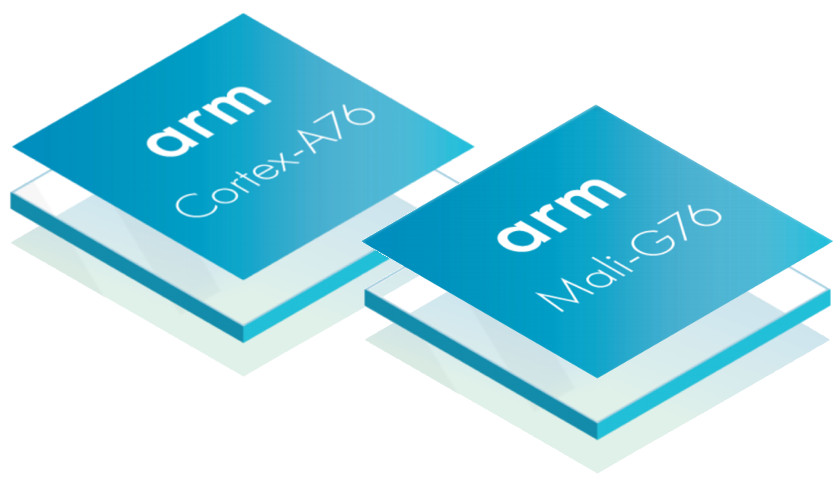
At IFA 2018, Richard Yu lifted the lid on Huawei’s next-generation smartphone processor — the HiSilicon Kirin 980. It’s the first processor announcement based on a 7nm process — TSMC’s to be precise (as expected) — but there’s plenty more tucked away inside the high-end chipset, including new CPU, GPU, and NPU (AI) components, among others.
There’s talk of some 6.9 billion transistors packed into just a one square centimeter chip, which certainly sounds impressive. Regardless of the number, the bottom line is the Kirin 980 will be much more powerful and energy efficient than Huawei’s last generation chipset.
Kirin 980 boasts the latest Arm parts
Leaping right into the performance side, the Kirin 980 utilizes Arm’s latest high-performance Cortex-A76 cores, another industry first, along with four lower power Cortex-A55 cores. Since the Kirin 970 featured high-performance Cortex-A73s, this is the first Huawei SoC built on cores capable of utilizing Arm’s DynamIQ technology, to squeeze all eight cores into a single cluster.
Huawei has confirmed that this is in play inside the Kirin 980. The cores are arranged as two high-performance Cortex-A76s, two high-efficiency Cortex-A76s, and then four lower power Cortex-A55s. Huawei has also developed its own “Flex-Scheduling” technology for this new CPU setup to handle the task scheduling. We’ll be sure get more details on how the technology works.
Either way, this intriguing setup should offer high levels of peak performance and prolonged battery capacity, especially in conjunction with the new 7nm process. Huawei said these cores can provide up to 75 percent higher performance and 58 percent less power consumption than its previous generation chipset.
| SoC | Kirin 980 | Kirin 970 | Kirin 960 |
|---|---|---|---|
| CPU | 2x high-performance Cortex-A76 2x high-efficiency Cortex-A76 4x Cortex-A55 |
4x Cortex-A73 @ 2.4GHz 4x Cortex A53 @ 1.8GHz |
4x Cortex-A73 @ 2.4GHz 4x Cortex A53 @ 1.8GHz |
| GPU | Mali-G76 | Mali-G72 MP12 | Mali-G71 MP8 |
| Neural Processing Unit (NPU) | Yes, 2x | Yes | No |
| LTE modem | LTE Cat 21 | LTE Cat 18 | LTE Cat 12 |
| Process | TSMC 7nm | TSMC 10nm | 16nm |
In another first, the Kirin 980 also boasts Arm’s latest high-end Mali-G76 GPU. There’s a 46 percent improvement to graphics processing power up for grabs here, along with a huge 178 percent improvement to power efficiency over the Kirin 970’s Mali-G72 MP12. That means you’ll be able to play for much longer on upcoming Huawei devices, even when games have cutting-edge graphics.
Rounding out the list of industry firsts, Huawei also packed a Category 21 LTE modem into the Kirin 980. This modem allows for up to 1.4Gbps download and 300Mbps theoretical upload speeds. That’s a tad faster the Qualcomm X20 modem inside the Snapdragon 845 and Samsung’s Exynos 9810, which caps out at 1.2Gbps. Although real-world use will likely only be marginally different, Huawei suggests its new modem has an edge in certain use cases, like when in transit.
Importantly, there’s no mention of 5G inside the new chip, but that’s not so surprising. Few global markets will have 5G networks up and running next year. Huawei’s limited retail market in the U.S. makes this even less of a priority. We’re not expecting many 5G handsets in 2019.

Even more AI in a tiny chip
Huawei debuted its ambitious plans to utilize neural networking (aka AI) in smartphones last year with the neural processing unit (NPU) in the Kirin 970. That chip was provided by Chinese IP provider Cambricon. Huawei is literally doubling down on its efforts with the Kirin 980, implementing a dual NPU setup. This can provide even more than a doubling of performance in some use cases, according to Huawei.
Image recognition performance leaps to 4,500 images per minute, 120 percent more than the Kirin 970. The dual NPU can analyze particulars in images and pull information from a real-time video stream. Importantly, the chip continues to support popular neural networking frameworks like Caffee, Tensorflow, and Tensorflow Lite, in addition to its own NPU SDK.
In addition to more powerful AI capabilities, a fourth generation image signal processor (ISP) boosts data throughput by 46 percent. The new ISP also improves support for processing info from multiple cameras and motion tracking of photo subjects. The Kirin 980 also uses this ISP for multi-pass noise reduction, improving low light photography, and removing imaging artifacts without losing detail. It’s impressive, but Huawei’s smartphones cameras already go rather hard on the processing, so we’ll reserve judgment for now.
Closing thoughts
Huawei’s Kirin 980 looks set to be the most powerful smartphone chip on the market, at least for a little while. The high-end Cortex-A76 CPU and Mali-G76 GPU will easily handle everything a smartphone user can throw at it. Paired up with top of the line image processing and modem technologies, the 980 packs in everything a demanding smartphone user will need.
There are a few unknowns, but they’re equally as promising. The two performance-tier Cortex-A76 setup could work exceedingly well given the single core performance gains on offer, which is where most of the heavy lifting is required anyway. Although we’ll have to see how the scheduling works out in real-world use cases. The dual-AI core could also be a boon for future handsets if there are enough compelling uses for consumers above and beyond voice recognition.
A Mate series handset packing a Kirin 980 is scheduled for an October launch and it’s sure to be a powerhouse.


0 coment�rios:
Post a Comment